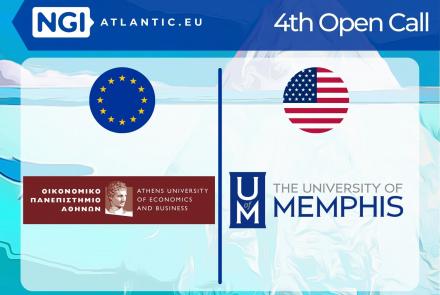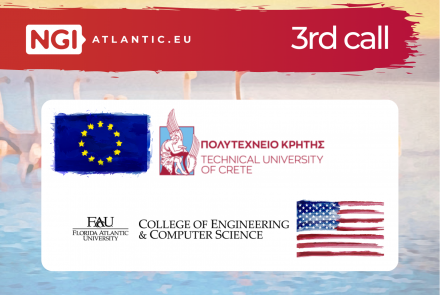The NGIAtlantic.eu project has ended in February 2023. For the follow-up initiative, visit NGI Transoceanic.

Project Coordinator (EU) :
Athens University of Economics and Business - Research CenterCountry of the EU Coordinator :
GreeceOrganisation Type :
AcademiaStarting date :
SECOND: Securing Content Delivery and Provenance
Open Internet Architecture and Renovation
SECOND will implement a set of extensions to the Named-Data Networking (NDN) implementation of the Information-Centric Networking (ICN) paradigm, using Decentralized Identifiers (DIDs) to support a self-sovereign, content authentication scheme. SECOND will integrate DIDs into the core NDN implementation, allowing it to secure content caching and forwarding, enable the binding of DIDs to human-readable content names, to simplify user interaction, and support partial revelation of encrypted content without modifying its DID. In addition to performing experiments on the NDN testbed, the EU partner will modify the core NDN code and perform experiments on the US partner’s infrastructure, under their guidance.

Project Coordinator (EU) :
Technical University of CreteCountry of the EU Coordinator :
GreeceOrganisation Type :
AcademiaStarting date :
Secure Communication Based on Robust 3D Localization
Privacy and Trust enhancing technologies
The proposed project is on the implementation and experimentation of secure communica- tion solutions for mobile wireless networks, building on the development of robust 3D locali- zation algorithms. The secure communication solution offered will be implemented and tested on the NSF-funded POWDER/RENEW platform in Salt Lake City, UT, through a col- laboration between the Telecommunications Laboratory of the Technical University of Crete, Greece and the Center for Connected Autonomy and Artificial Intelligence, Florida Atlantic University, US. The US Partner will implement 3D localization techniques and the EU Coordi- nator will implement secure communication links using HARQ and 5G polar coding.

Project Coordinator (EU) :
Athens University of Economics and Business - Research Centre (AUEB)Country of the EU Coordinator :
GreeceOrganisation Type :
AcademiaStarting date :
Self-Certifying Names for Named Data Networking
Privacy and Trust enhancing technologies
The SCN4NDN project will experiment with the merger of two promising NGI technologies: Information-Centric Networking (ICN) and Decentralized Identifiers (DIDs) ICN has been on the spotlight of many research efforts for more than a decade. It has been explored as a standalone future Internet architecture, as well as an enabler for other NGI architectures, including 5G, IoT, and architectures focused on big dataand/orcyber security. ICN’s goal is to enable fast and secure content dissemination by leveraging direct and intrinsic information identification; this allows supporting multicast, multipath, and caching, as well as novel trust mechanisms.
